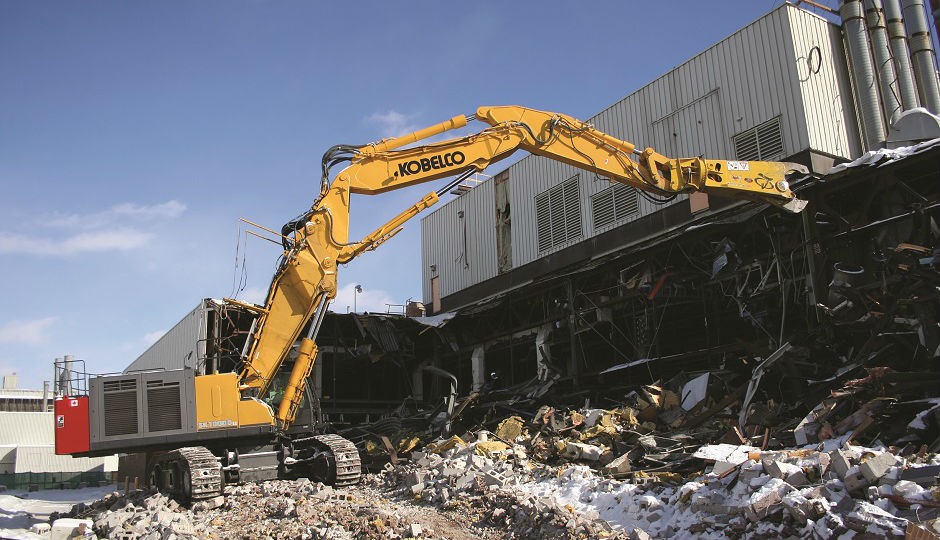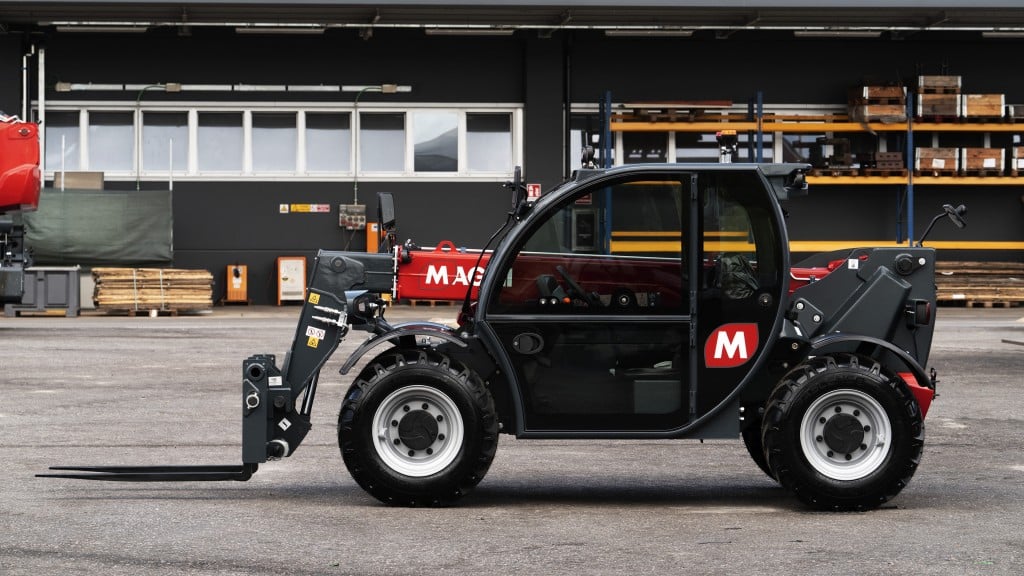Priestly Demolition puts massive Kobelco demolition excavator to work

Kobelco has cracked the North American market for high-reach demolition by selling its first SK1000DLC demolition excavator to Priestly Demolition Inc. (PDI). While the Japanese equipment manufacturer has been building demolition machines since the 1970s, it only recently introduced the SK1000DLC to North America at ConExpo 2014. Kobelco’s SD210D Multi-Dismantling Machine and the SK 350DLC Scrap Handling Machine were also rolled out at ConExpo.
Kobelco’s demolition machines are so large that potential buyers must go through a thorough safety process check.
The SK1000DLC caught the eye of Ryan Priestly, Priestly Demolition’s president and owner, who was given a demo by Ken Folden, Kobelco’s Canadian service manager.
“Ken emphasized the machine’s impressive ability to be assembled, moved and up-and-running within hours. He sold us on its capabilities right there at the show,” says Priestly. “Two weeks later, Bob Green from [Toronto-area Kobelco dealer] Robert Green Equipment visited our office. I told him how impressed I was with the SK1000DLC and that I wanted to buy it from him.”
Kobelco’s demolition machines are so large that potential buyers must go through a thorough safety process check. Before PDI was able to purchase the SK1000DLC, the company needed to be certified by Kobelco’s headquarters as a qualified buyer. Over the course of two days, a crew of engineers and Kobelco representatives visited the PDI office in King, Ontario and observed PDI employees as they worked on their jobsites. “After the analysis was complete, the Kobelco team expressed how impressed they were with PDI,” Green said.
After the sale and purchase agreement, Priestly and Andrew Kelly, PDI’s equipment manager and master mechanic, completed a final inspection of the SK1000DLC, which was stored in Las Vegas following ConExpo.
“I wanted to get into the operator’s seat and actually run the SK1000,” says Priestly. “Just as Ken told us at ConExpo, we were able to retract the machine’s extendibility, insert a separate boom attachment, and have the machine up and running within hours. We were amazed. At that point we couldn’t wait to bring the machine home and put it to work.”
Transportation of the massive SK1000DLC demo excavator from Las Vegas to Ontario was handled by Landstar Transportation Systems and involved a total of seven loads.
The 245,000-pound machine is built with transportation in mind. The hydraulically- activated undercarriage can be narrowed down to fit onto a trailer, versus other demolition excavators whose undercarriages must be adjusted manually. A front and rear translifter enables the track frames to be removed, thus lightening the load for easier transportation.
Folden said the transportability of the SK1000DLC was a key reason that Priestly chose to purchase the machine.
“One of the things he really liked was the ability for the tracks to be hydraulically retracted and extended so that they could transport it easier,” said Folden, who is based in Calgary, Alberta. “They have high-reach excavator conversions right now; they have to break them down a lot more than we would, to transport it.”
Another check in the box for the SK1000DLC, PDI determined, was the shorter, heavier boom attachment designed for demolishing four-storey buildings. The attachment can be switched out from the high-reach boom meant for reaching to the top of a 13-storey building, or a maximum of 124 feet. While the longer boom can only be equipped with a shear, the shorter boom can be fit with a shear, a hammer or a bucket for excavation.
Folden said PDI wanted the ability to use a large shear to cut beams, for example in its current application, demolishing the General Motors plant in Whitby, Ontario.
Other demolition contractors needing the height will stick with the longer boom, but the key thing is the interoperability of the two attachment systems, says Folden.
“We call it the Swiss army knife of demolition machines. Nobody else has those two attachments.”
One of the challenges of operating the SK1000DLC at full boom height is visibility, according to Folden. An optional tilt cab is available as a modification, an option PDI took advantage of to increase operator ergonomics and sightlines – which are important factors to consider when the work is taking place up to 13 storeys above ground level. A camera option is also available.
In a 2014 video filmed at ConExpo for bauforum24.tv, Folden said the main market for the SK1000DLC will be older North American cities where implosion is not an option and buildings must be taken down piece by piece.
Kobelco currently manufactures eight different models of demolition machines and Folden said the company has received a lot of interest for the smaller machines especially. He expects Kobelco to introduce those models to the North American market within the next year.



